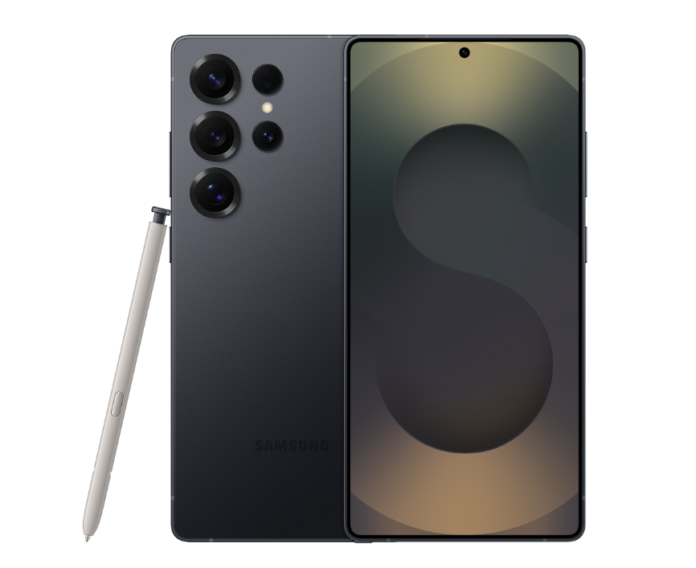
iPhone 17 Pro Max and Samsung Galaxy S25 Ultra represent the peak of flagship smartphones in 2025. Both devices pack advanced hardware, refined designs, and professional-grade cameras. For users deciding between Apple’s iOS ecosystem and Samsung’s feature-rich Android experience, comparing these two devices highlights how each brand pushes innovation in different ways.
1. Design and display

Build and Feel:
The iPhone 17 Pro Max uses an aluminum alloy frame with Ceramic Shield 2 protection, giving it strong durability and premium aesthetics. Meanwhile, the Galaxy S25 Ultra upgrades to a titanium frame with Gorilla Armor 2, making it tougher against scratches (Mohs 6 vs iPhone’s Mohs 5) and drops. Apple’s design feels more classic and minimal, while Samsung’s titanium edge makes it more rugged and futuristic.
Verdict: The Galaxy S25 Ultra feels more premium with titanium and better scratch resistance.
Display Quality:
Both feature 6.9-inch LTPO OLED panels, but Samsung’s Dynamic AMOLED 2X supports 1440p resolution and HDR10+ at up to 2600 nits, while Apple’s Super Retina XDR peaks at 3000 nits with Dolby Vision. Apple has the brightness advantage, which benefits outdoor use, while Samsung provides higher resolution and sharper detail for gaming and streaming.
Verdict: Samsung is sharper, Apple is brighter; the choice depends on whether clarity or visibility matters more.
Verdict:
Overall, the Galaxy S25 Ultra takes the edge in build and scratch protection, while the iPhone 17 Pro Max delivers unmatched brightness. Samsung is slightly ahead for its premium titanium construction, though display preferences may vary by use case.
Please Note: When you buy something using the links in our articles, we may earn a small commission at no cost to you.
2. Specifications

Performance:
Apple’s A19 Pro chip, built on 3nm architecture, emphasizes raw efficiency with hexa-core power, while Samsung’s Snapdragon 8 Elite brings octa-core performance and the powerful Adreno 830 GPU. For gaming and multitasking, Samsung’s higher GPU clock speed makes it more capable, whereas Apple’s ecosystem and software optimization deliver smoother long-term performance.
Verdict: Samsung is stronger in raw power, but Apple remains more efficient and consistent across iOS.
Battery and Charging:
The iPhone offers 4832–5088 mAh batteries depending on model type, with 50% charge in 20 minutes (wired) and advanced MagSafe/Qi2 wireless charging. The Galaxy S25 Ultra includes a 5000 mAh cell with 45W wired charging, reaching 65% in 30 minutes, plus faster wireless reverse charging. Samsung is more versatile for fast top-ups and reverse wireless use, while Apple’s satellite SOS and ecosystem integration give it unique practicality.
Verdict: Samsung is better for speed and flexibility, Apple wins in ecosystem reliability.
Verdict:
The Galaxy S25 Ultra leads in raw performance and charging speeds, while the iPhone 17 Pro Max prioritizes efficiency and integrated ecosystem features. Samsung edges out slightly for power users who prioritize multitasking and charging versatility.
3. Camera

Main and Secondary Lenses:
Apple equips three 48MP lenses with a LiDAR scanner, focusing on consistency and computational photography. Samsung pushes boundaries with a 200MP primary sensor, dual telephotos (3x and 5x optical), and a 50MP ultrawide. For zoom versatility and sheer resolution, Samsung dominates, while Apple’s strength lies in accurate color science, ProRes RAW, and spatial video.
Verdict: Samsung offers a superior hardware range, while Apple delivers refined professional workflows.
Selfie Camera:
The iPhone 17 Pro Max brings an 18MP sensor with OIS and depth-enhancing SL 3D sensors, supporting 4K recording and Dolby Vision. Samsung’s 12MP shooter delivers HDR10+ but lacks the same depth technology. Apple’s selfie camera is better suited for content creators and immersive AR, while Samsung remains more than capable for standard photography.
Verdict: Apple wins in selfies due to higher resolution, OIS, and 3D sensor integration.
Verdict:
Samsung’s camera system is more versatile and powerful in hardware, but Apple retains an edge in selfie quality and professional-grade video recording tools. For creators, Apple offers more polished outputs, while Samsung provides unmatched zoom and flexibility.
4. Pricing
Both phones start around $1200, making them direct competitors in cost. The iPhone 17 Pro Max extends to 2TB storage, while Samsung maxes at 1TB but offers higher RAM options at 16GB. Apple gives more storage headroom, while Samsung provides more memory for heavy multitasking.
At the same base price, the better value depends on whether storage expansion (Apple) or RAM (Samsung) is more important to the user.
Disclaimer:
Prices are approximate and may vary based on country, region, and applicable taxes.
5. Conclusion

iPhone 17 Pro Max stands out with advanced satellite SOS features, Face ID, and ProRes workflows tailored for creators. The Galaxy S25 Ultra brings titanium durability, the S Pen stylus, and Samsung DeX for a desktop-like experience. Each device offers ecosystem-exclusive tools that set them apart.
Verdict:
Galaxy S25 Ultra is ideal for users wanting maximum versatility, zoom photography, and desktop productivity. The iPhone 17 Pro Max suits creators, Apple ecosystem users, and those prioritizing long-term software efficiency. Both are equally premium, but the better choice depends on whether a user values Samsung’s versatility or Apple’s ecosystem polish.
Read More:





Comments